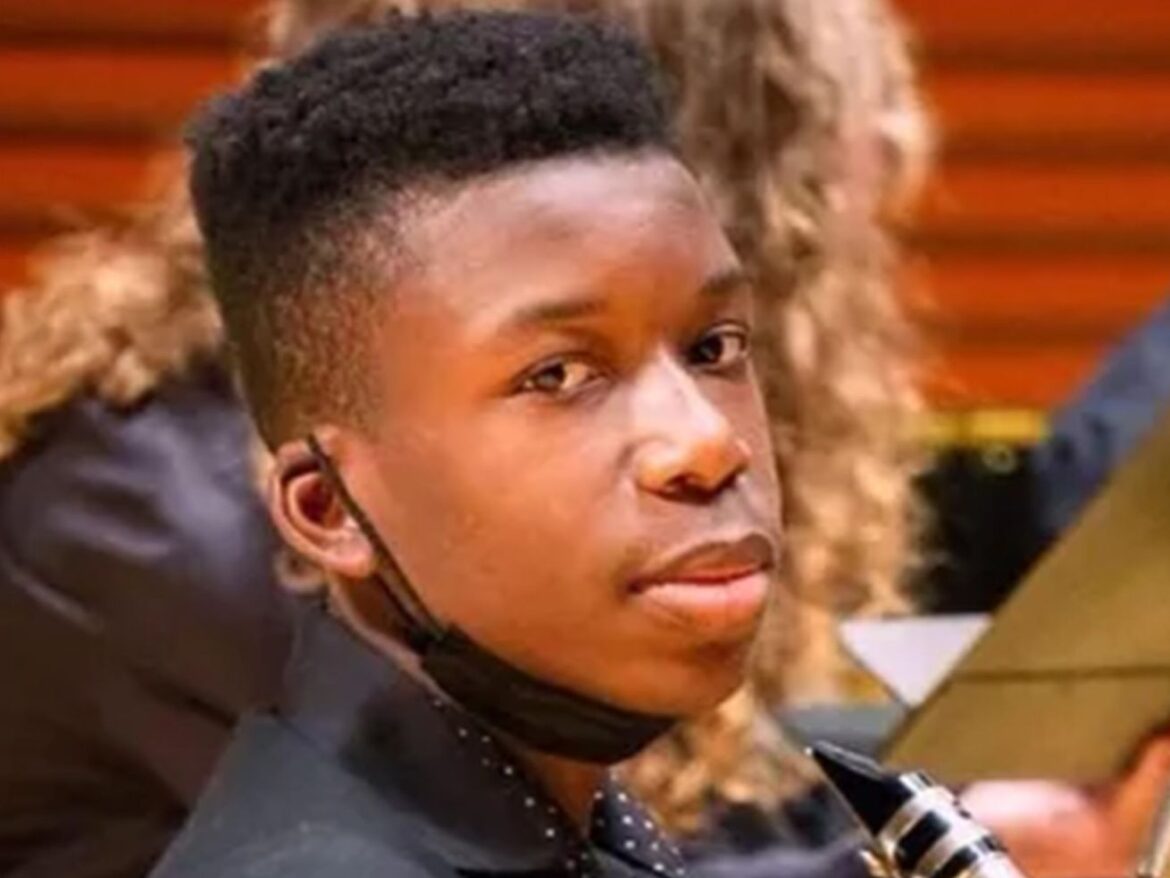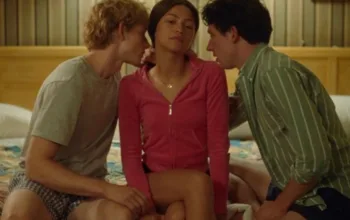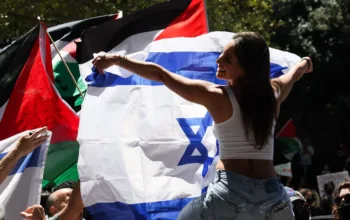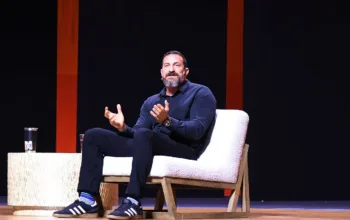A Black teenager went to the wrong house to pick up his siblings. He was shot.
On April 13, Ralph Yarl, a 16-year-old Black teenager, was shot in Kansas City after going to the wrong house to pick up his two younger brothers. Following days of protest and outrage, Clay County Prosecutor Zack Thompson has formally charged 84-year-old Andrew Lester with two felonies related to the shooting.
After Yarl rang his doorbell, Lester, a white man, shot him twice, once in the head and then once in the arm. Yarl was hospitalized with life-threatening wounds, underwent surgery, and is now expected to eventually make a full recovery. An arrest warrant has been issued for Lester, though as of Tuesday morning, he has not been taken into custody.
In the days since Yarl’s shooting, Kansas City residents and protesters have questioned whether the act was racially motivated and why law enforcement didn’t act more quickly to press charges. Shortly after announcing the charges, Thompson stated, “There was a racial component to the case,” though he did not elaborate further.
Lester faces one count of first-degree assault and one count of armed criminal action. Thompson said those charges were chosen due to the severity of their penalties: First-degree assault comes with a sentence between 10 and 30 years, or life in prison, and armed criminal action comes with a sentence between three and 15 years.
The shooting occurred amid heightened scrutiny of violence against Black Americans following numerous killings and brutality toward Black people at the hands of police and other individuals. Frustration has also built in the wake of new attention to how the justice system has dealt with violence toward Black people in the past, with perpetrators often facing minimal or no consequences. This incident has reignited scrutiny of how the criminal justice system has treated such cases, and of Missouri’s stand-your-ground law, which police initially said they were reviewing to see if it offered the shooter protections.
Yarl’s attorneys, prominent civil rights lawyers Ben Crump and Lee Merritt, called prosecutors’ decision a “step in the right direction,” but noted they would “continue to fight for Ralph while he works toward a full recovery.”
“The trauma that he has to endure and survive is unimaginable,” Yarl’s aunt Faith Spoonmore wrote in a GoFundMe page that was set up to cover Yarl’s medical bills. A junior in high school, Yarl is known for his love of music and engineering. He plays the bass clarinet in his school band, competes on the science olympiad team, and hopes to go to Texas A&M to study chemical engineering, she says.
“Life looks a lot different right now,” Spoonmore writes. “Even though he is doing well physically, he has a long road ahead mentally and emotionally.”
What we know about the shooting and charges
The shooting took place last Thursday in Kansas City’s Northland neighborhood. Yarl was asked to pick up his twin brothers from a friend’s house, but accidentally went to 115th Street instead of 115th Terrace, which was just a block away.
According to Spoonmore’s post, the homeowner opened the door after Yarl rang the doorbell and then shot him in the head. After Yarl fell to the ground, the homeowner shot him again. Early evidence indicates that Lester shot Yarl through a glass door, with a handgun, Thompson said. Lester’s home has two doors, including an interior main door and a glass exterior storm door. In the probable cause statement, Lester said he brought his handgun with him when he went to answer the doorbell and open the main door. After opening the main door, Lester claimed he saw the teen put his hand on the exterior door handle and said he believed Yarl was trying to break in. Yarl said in his statement to police that he did not pull on the door.
Lester claimed that he was “scared to death” given Yarl’s size, and shot him to protect himself from a physical confrontation. Thompson noted that Yarl did not cross the threshold of the front door prior to the shooting. After he was shot, Spoonmore says Yarl sought help from neighboring houses and had to go to three places before finding someone who came to his aid.
Police said they responded to a call about Yarl’s injuries around 10 pm local time on Thursday. They said then that Yarl experienced a life-threatening injury but was in stable condition. Sunday, Yarl left the hospital and is set to continue his recovery at home.
Hundreds of people gathered in Kansas City to protest over weekend, demonstrating to support Yarl and to call for prosecutors to pursue charges against the shooter. “I realize that justice doesn’t come overnight, but that fact that there is a kid in the hospital and everything I read says not even a charge has been done, that concerns me,” Karen Allman, a neighborhood resident, told the local news network KSHB.
Police held Lester for a few hours after the shooting, but released him because they said they didn’t yet have enough evidence for prosecutors to file charges. Monday, the department referred the case to Thompson’s office, and he filed charges shortly after.
The shooting has raised questions about race and gun laws
Yarl’s shooting immediately spurred concerns about possible racial motivations in the attack, and also raised questions of whether implicit biases have affected the way law enforcement has treated the case.
“How do you protect a Black kid?” Yarl family friend Patience Gaye told the Kansas City Star. “We left our countries because we don’t want to be killed. That’s why we left. They came to America for a better life. How is this a better life?” According to the Star, Yarl’s parents immigrated to the US in order to flee violence in Liberia.
The shooting has taken place following police killings of Black men and boys, including 29-year-old Tyre Nichols in Memphis and 12-year-old Tamir Rice in Cleveland, as well as the shooting of Ahmaud Arbery, a 25-year-old Black jogger, by two white men in Georgia.
Civil rights advocates believe the investigations in a number of these cases were slow-walked due to systemic racism, and some feared that was happening again with Yarl. In Arbery’s case, for example, local officials did not arrest the two attackers for weeks, and the investigation cycled through multiple prosecutors. Ultimately, the Georgia Bureau of Investigation had to take over the case. Additionally, Georgia Attorney General Christopher Carr wound up requesting a federal DOJ investigation of local prosecutors’ handling of their investigations. Arbery’s killers were indicted on murder charges four months after he died.
Yarl’s case is also unfolding amid a nationwide conversation about the ubiquity of guns and the relatively lax gun laws many states have. Missouri is one of more than 30 states with a stand-your-ground law, under which a “would-be shooter defending life or property does not have to retreat before taking violent action,” according to NBC News.
Oxford University researcher Michelle Degli Esposti has previously found links between the passage of state-level stand-your-ground laws and increased homicides. Between 1999 and 2017, the time frame that Esposti studied, Missouri in particular was one of the places with the highest increase in gun homicides after the passage of a stand-your-ground law. In that period, gun homicides increased 31 percent in the state. A stand-your-ground law also complicated the investigation of Arbery’s case and has been used as defense against the killing of 17-year-old Trayvon Martin in 2012.
The recent spike in gun violence has spurred a push to reevaluate gun laws in different states, a conversation that Yarl’s shooting could add to as well.
Update, April 18, noon ET: This story was originally published on April 17 and has been updated to include charges the prosecutors have filed in this case.



